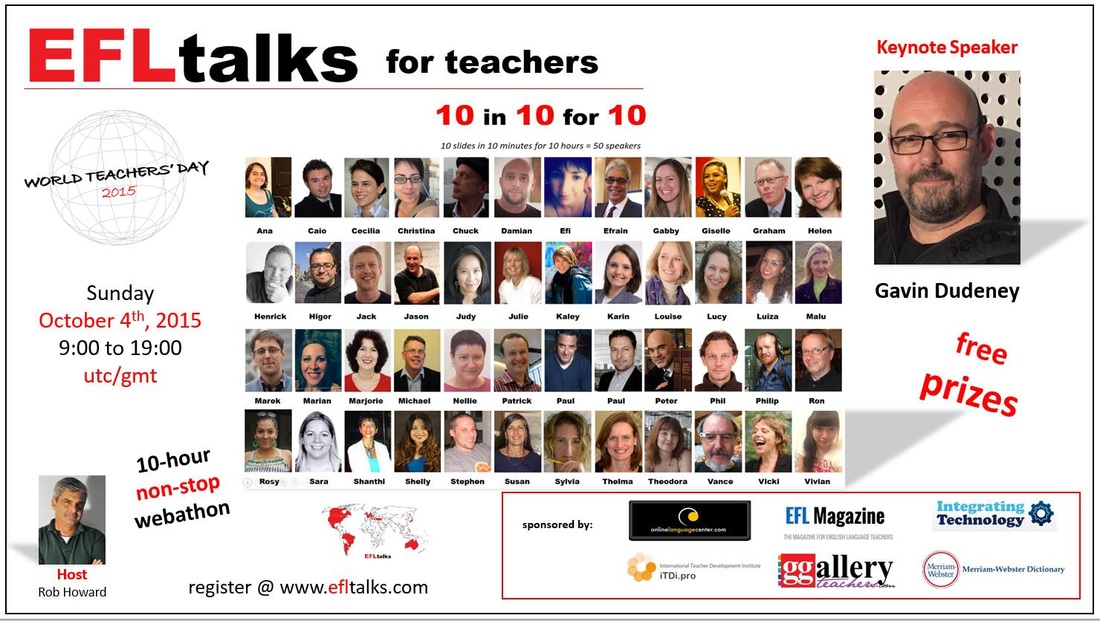|
Practise the Simple Present tense with your students using a FAST FUN SONG song in a Christmas them and revising morning routine activities at the same time. It can be used as an ACTION-SONG and the students will love it!! Let me know in the comments how you get along with this. Follow these tips and enjoy helping people learn English easily!! Your English fluency teacher, Susan You can download the script to the song here:
8 Comments
Do you know the three peculiarities of the British Christmas? Every Christmas celebration in the world has its own traditions and the British Christmas has three peculiarities. The first one is Christmas cards: we hang our Christmas cards around the house on a string with tiny pegs because we tend to send a lot of Christmas cards, but really hundreds... I used to prepare about a hundred hand-painted Christmas cards and I used to write the address on each envelope by hand, the sender, then I'd choose a pretty stamp, which is very hard to get nowadays and I'd write a personal note inside each card after which I would send the 100 cards. However, the English peculiarity is that we don't only send cards to friends and relations who live far away but we also send cards to our neighbours and we generally put them in the post. This gives a lot of work to the postal services and that's why most Christmas cards should be sent by the beginning of December to make sure they arrive on time. So this is the first peculiarity: sending Christmas cards even to your colleagues, even to your neighbors but all through the post. Then another peculiarity is our Christmas cake. Now every country has a different kind of cake to celebrate Christmas; for example the Germans will have the Christstollen and the Italians will have the Panettone or the Pandoro and the British have a Christmas cake but particularly the traditional Christmas Pudding at the end of the meal on Christmas Day. Now what's peculiar about it? Well, it's really made many, many months in advance. Most of my friends prepare it around August and then once it's made with all the different dried fruits and a little bit of brandy it's cooked for many many hours. Depending on whether you cook it in the pressure cooker, because it's steamed, or else traditionally in a pot, it'll take quite a few hours to cook. In fact, on Christmas Day it's then steamed once more to revive it. When it's cooked we don't put it in the freezer and we don't put it in the fridge, we put it in a cupboard and about once a month we douse some brandy over it which will help it mature and will help it also be preserved with the alcohol. Some people say that brandy is a very good preservative and that Admiral Nelson's body, when he was killed at the Battle of Trafalgar in 1805,was apparently preserved completely immersed in a cask of brandy on board until they reached land. On Christmas Day we pour a little bit more brandy on it then we light it flambé and then we eat a piece which is very, very rich so you only need a small slice otherwise you'll have difficulty digesting it, as happened to someone I know when he got indigestion and had a terrible temperature the next day! Therefore, peculiarity N°.1: lots and lots of Christmas cards; peculiarity N°.2: this cake which is pre-prepared really a long time in advance and peculiarity N°.3: is the Christmas cracker, which some children think is a giant sweet. Well, no it looks like a sweet but it isn't. Every family will place a Christmas cracker next to their plates and generally, just before the meal, they will hold the cracker with the person next to them and pull it. Inside there's a little piece like a paper stick and this crosses over in the middle inside the cracker so that when you pull it it goes crack - that's why it's called the cracker. You crack open the cracker and inside you'll find a small present just like those in Easter eggs, that means of no value, then you'll find a joke which will make you laugh and finally you'll find a paper crown. Now what I find particularly peculiar is that everyone, not only children and grannies, but also your doctor, your teacher, the police inspector, everyone will spend Christmas Day eating with this crown on their head, which I think looks a little bit ridiculous but that's a tradition in England. Very often they're all different colours. These are three peculiarities of a British Christmas. What about you? Are there any peculiarities of Christmas in your country? I'd really enjoy reading about them in the comments below, so please put down any peculiarities of Christmas in your country. Looking forward to hearing about them, Best wishes for A WONDERFUL NEW YEAR!! Susan Every Christmas we teachers rack our brains to think of new as well as traditional activities to do with our students as the festive season nears.
Over the years I have started preparing children as early as the end of October so as to be sure they knew their Christmas carols and plays off by heart. However, as a teacher, repeating activities year in, year out, can become less stimulating over time. Therefore I have explored other ideas suggested to me and decided to adapt Christmas activities to learn more language useful to us throughout the year as well as listening comprehension and speaking skills. I have now compiled a small E-Book of my more successful OUT-OF-THE-ORDINARY CHRISTMAS ACTIVITIES in the hope of being able to stimulate other teachers who may want to deviate from their usual Christmas activities. Looking forward to any feedback regarding these activities and hoping you may want to contribute with more of your own in the comments below. Susan's OUT-OF-THE-ORDINARY CHRISTMAS ACTIVITIES for practising English ESL can be downloaded here. Wishing your creative Christmas endeavours bring fruitful progress to your students... Have a wonderful festive season! Susan
The last few days before Christmas are marked by LOW CONCENTRATION and HIGH EXCITEMENT built up by all the pre-Christmas activities and the tiring end of the year. I usually reserve these following activities for just this last period and it always captures the students attention.
You can download the links to these activities below. I hope you have fun with these last-minute Christmas activites. Susan
Adults and children alike tend to sing songs often without thinking of their meaning. Christmas is a time for singing and I have broken down a Christmas song for teens and adults, Happy Christmas, as well as one for children, Rudolph, to practise adjectives and expressions. I start by singing the song, we then personalize the main sentences (see my sheets) to make them more meaningful for the students who will hopefully not only remember the new words and expressions repeating them in song but will also have fun doing so. You can download my sheets below. Feel free to delete or translate the Italian into another language. I hope you find the activity useful and enjoyable. Susan
Christmas adverts can be stimulating to use in class for language learning. This particular one is very rich in details so one can use it for vocabulary acquisition. Apart from asking the very specific questions on the sheets, I often expand by asking students to predict was is going to happen next as well as recounting what has just happened. A vocabulary rich Christmas activity to do in class or even autonomously at home: stop the video numerous times following the indications given and enjoy describing all the details of the kitchen in this fun disastrous Christmas with Mog, the cat. Excellent for revising and learning new vocabulary in the kitchen! Enjoy! You can download the sheets below. I hope you find the activity useful and enjoyable. Susan
A Christmas classic in two pages to practise scanning and listening comprehension skills is another way of approaching Dickens and acquiring exam skills. I summarized the story to be done in a one-hour lesson so as not to be too tedious and give a sense of completion. I first hand out the story (see download) or project it on the whiteboard and whilst I’m doing so they can skim it but most students already know the story from films or cartoons if they haven’t already read it. I divide the class into teams A and B. I then ask them questions on the text without the students being able to read them and the first person to find the answer in the text gets a point for their team. They have to read out the complete sentence to answer. This activity gives them listening, scanning, reading and pronunciation practice. It's more fun than just reading the story. There is also a GAP-FILL for homework but one has to first collect in the photocopies with the complete story on it. The competitive element makes it an exciting activity even for those participants who would normally be easily bored by reading a story. To encourage weaker or less collaborative students (I’m thinking of some teens) I sometimes nominate those students to receive 2 or 3 points each for their team, making sure there are an equal number of ‘specially nominated’ students in each team so as to be fair. You can download my three sheets below. I hope you find the activity useful and enjoyable. Susan
As the festive season nears it's nice to do language activities in the Christmas spirit even if our students come from a multicultural background or are atheist. I feel it should be seen by all participants in class not so much as a religious moment solely for Christians (the Church is the appropriate place for that) but as an opportunity to exchange cultural and religious traditions from all over the world. So,whilst I explain to students how the Christmas season is celebrated in Great Britain, I also take the opportunity to ask students of other faiths and non to tell us about their greatest celebrations during the year. It's very interesting to hear about other religious traditions and a moment of sharing. Just as interesting is to discover that many families in far off countries celebrate Christmas despite not being Christian as a day for families to reunite, spend time together and exchange presents. So, apart from singing traditional carols, modern Christmas songs and enacting the Nativity, students enjoy any language activity in a new festive season motif. An activity I read about a couple of years ago but cannot remember the source (please let me know if you recognise who invented this activity) is: GUESS WHAT'S INSIDE THE CHRISTMAS STOCKING! I adapted it into two versions: one stocking for beginners with a PDF of suggestions as to the contents (objects for children & teens) and another stocking for adults with just a few prompts on the language of speculation: It could be... It might be... It can't be.... I thinks it's... It must be made of... It rattles so... etc. This seemingly simple activity causes much speculation amongst participants young and old, keeping them fully concentrated and engaged for more than half an hour, feeling the shape and consistency of the objects through the stocking, trying to guess the materials they are made of as well. At the end the stocking is opened and the objects revealed! A fun, exciting and useful activity for all ages, learning to discuss what things look, feel like and are made of. You can download my two sheets and the audio for beginners. Hope you have fun with them, Susan
Preschoolers (and younger Primary School children) love singing to movements. I invented this Preschool Nativity Play Song to act out the Nativity so as to learn not only the story but also a lot of vocabulary as well. We usually do it altogether, assigning just the main roles to a few but everyone else joining in at the same time. The more dramatic the movements, the more meaningful and fun: father’s long long beard reaches the ground (pulling it from our chins), we put our hands up on our heads to imitate the donkey’s long long ears, and so on … Depending on the size of the group we sometimes improvise costumes as well, or one of the bigger children as a donkey – we often make crowns for the Wise Men and a few ‘presents’ before starting the song. Anything to make it fun and memorable. I am posting it well ahead of time because some teachers like to do it as a one-off activity whilst others like to practise it for an upcoming Christmas show. Either way, you can download the NATIVITY SONG and suggested tune in the audio below. Hope the children enjoy it! Susan
|
Categories
All
Would you like regular English learning & teaching ideas? Subscribe to my blog so you don't miss a post!
AuthorMy name is Susan Brodar, born in London into a multilingual family and brought up bilingual English / Italian. Archives
December 2018
|
||||||||||||||||||||||||||||||||||||||||||||||||||||||||||||||||||||||||||||||||||||||||||||||||||||||||||||||

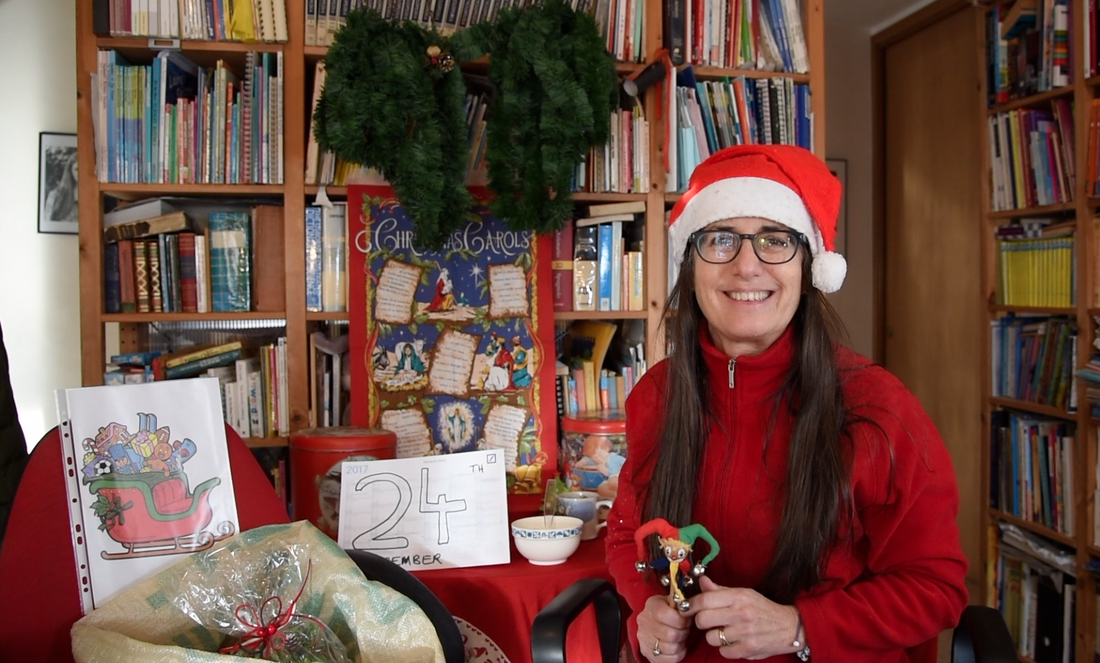
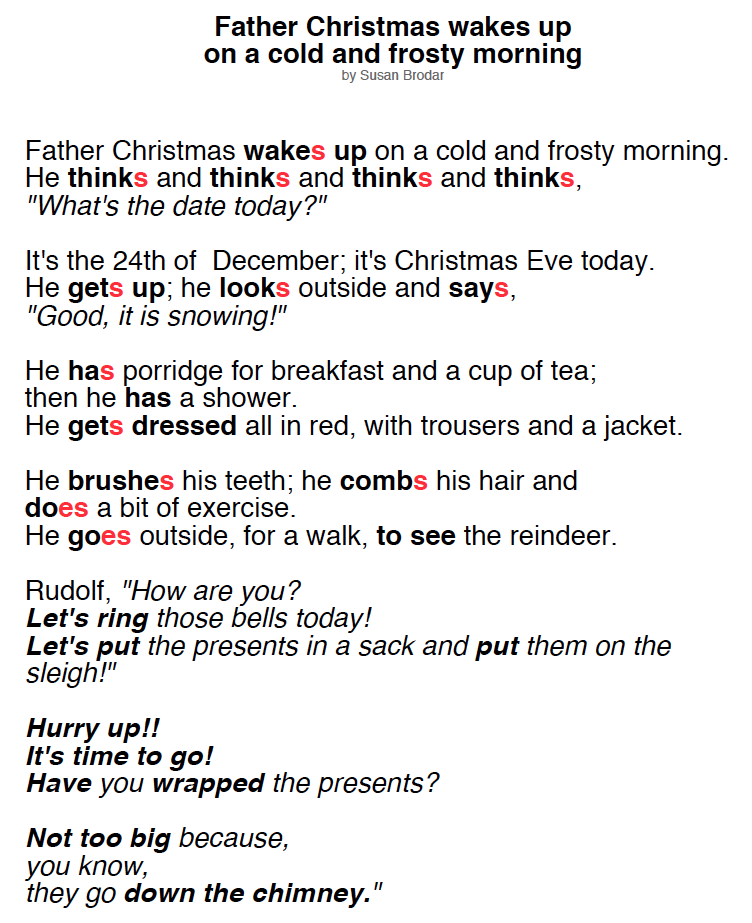


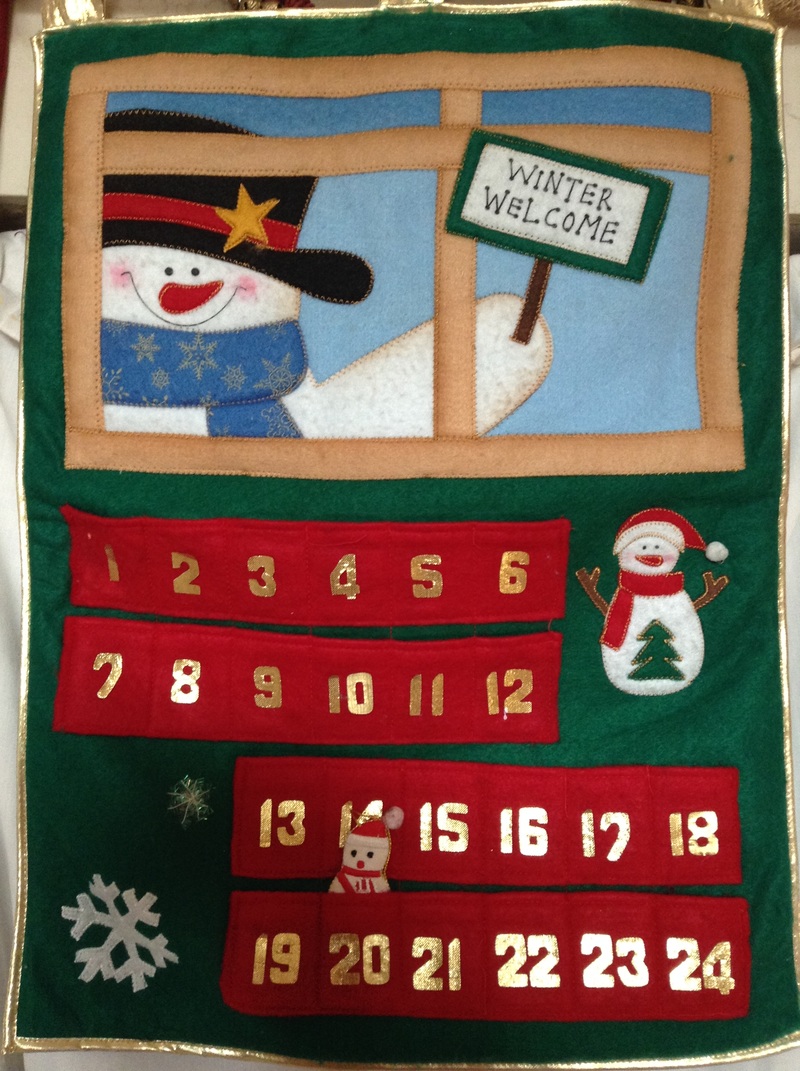

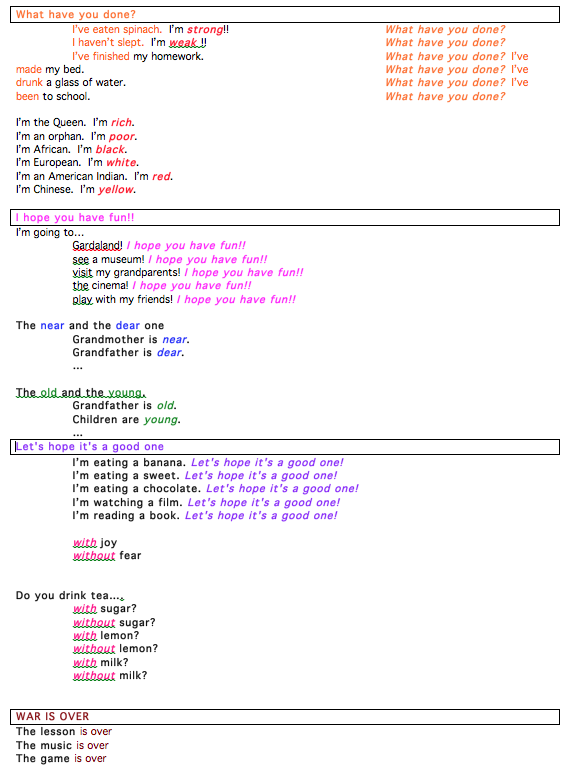



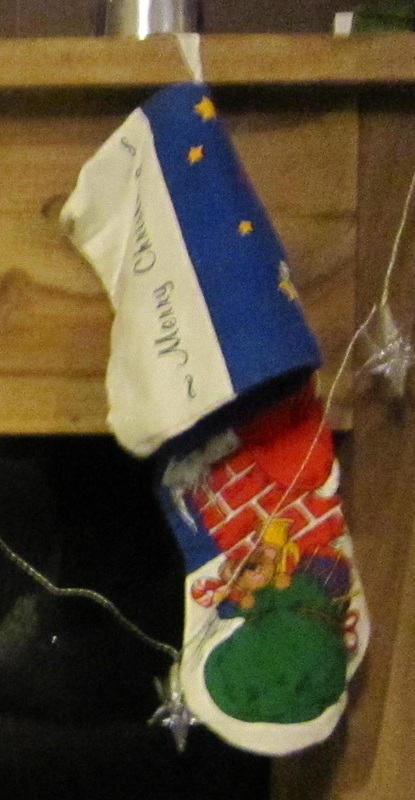
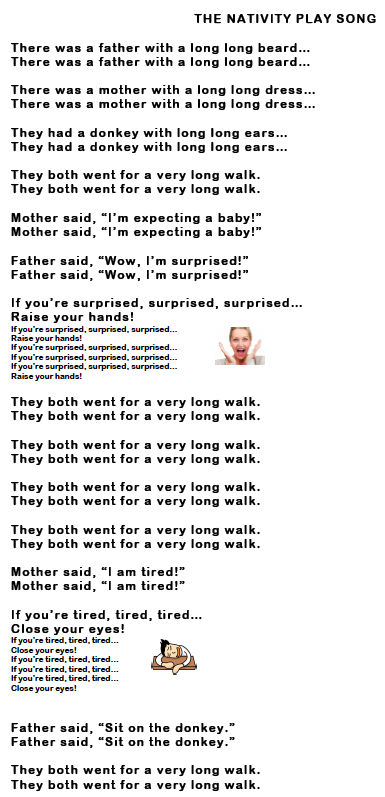
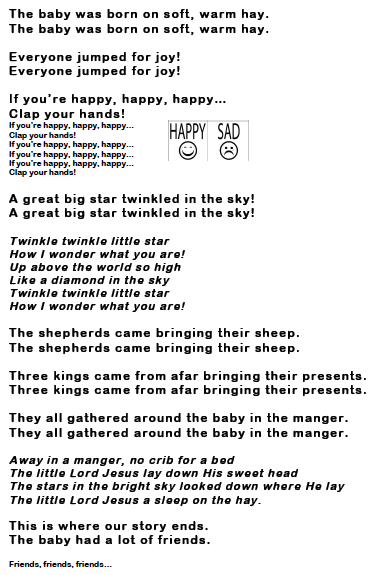



 RSS Feed
RSS Feed
